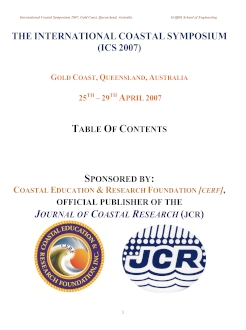Hanslow, D. J., 2007. Beach Erosion Trend Measurement: A Comparison of Trend Indicators, SI 50 (Proceedings of the 9th International Coastal Symposium), 588 – 593. Gold Coast, Australia, ISSN 0749.0208
The measurement of longer-term trends in coastal erosion is of particular importance for the management of the world's coastlines. Methods commonly used for trend determination involve measurement of the shoreline or high water mark using aerial photography. For more dynamic coasts however, longer term trends in these features may be obscured by short-term fluctuations. In the present study, several different methods of quantifying beach recession and accretion are compared. In addition to the shoreline and the high water mark, these include the use of position indicators such as the vegetation line and the bluff or scarp location, as well as various volumetric measures. Comparison of the various methods is made with reference to MacMasters Beach, south-east Australia. The results show that the use of different indicators may result in significantly different trend estimates and that great caution needs to be exercised in the selection of appropriate indicators. For highly dynamic beaches, like MacMasters Beach, the less variable indicators like the scarp location and the dune volume may provide a better indication of underlying trends in beach erosion than the shoreline or high water mark.





